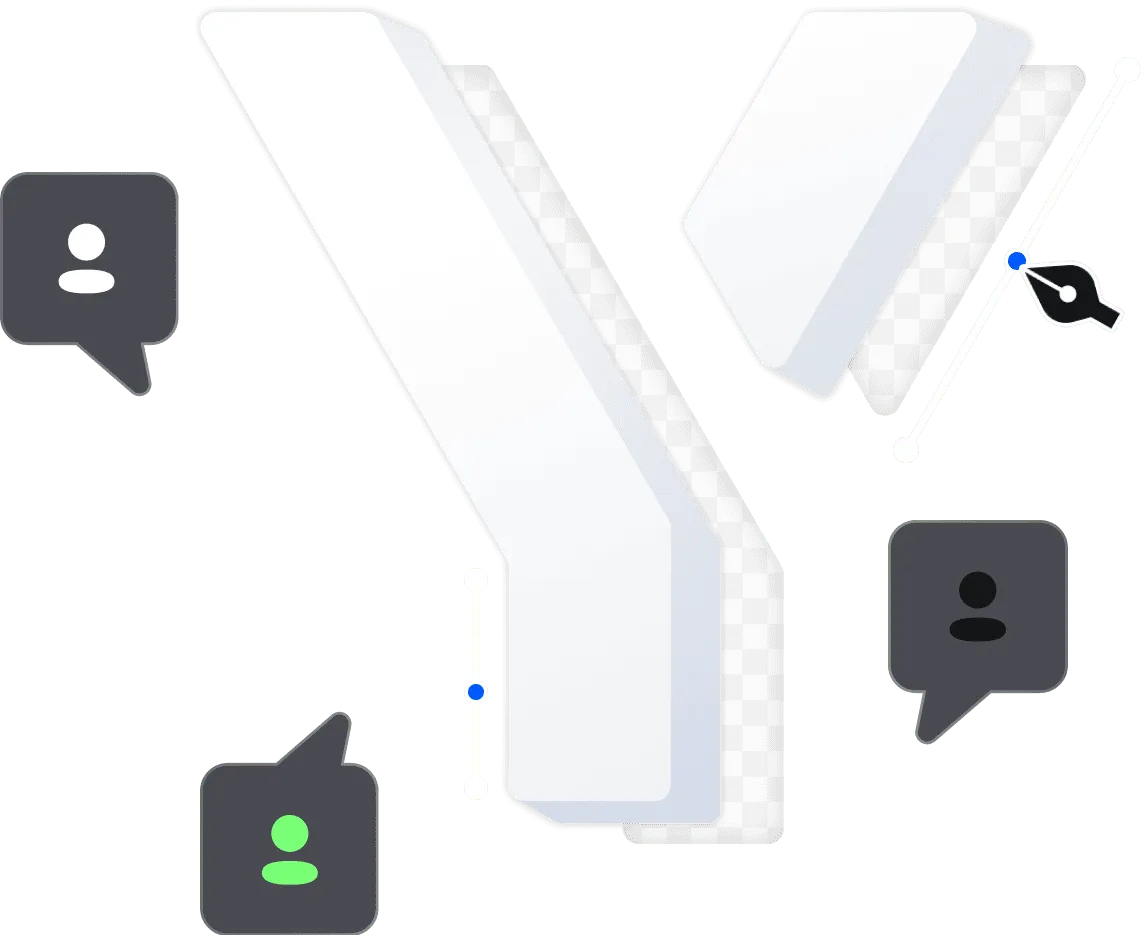Saas Sales: Everything You Need To Know

Today, SaaS is a multi-million dollar industry that keeps growing. Experts suggest that SaaS will reach a new level in 2021. So now is the perfect time to become a part of this industry.
But the more profitable the business is and the more opportunities it provides, the more competitors you will have. If you want to be a prominent player in the market, you need to find out more about SaaS selling models and effective strategies. In this article, we’ll help you figure everything out.
What Is SaaS Sales?
A simple explanation of the SaaS selling is as follows: a vendor develops a web application and manages it independently, providing customers with the app through the Internet. Clients work with a ready-made product in real time without downloading software to their computer and without purchasing it, but with payment of rent. Sellers strive to attract new customers and make the current ones stay. The main advantage of the SaaS model for the consumer is that there is no need to install, update, and maintain software.
Anyone who doesn't have much experience with the role of a SaaS sales representative needs to learn how to represent, show, and reply to questions about high-tech products. Also, it’s necessary to grow accustomed to working on the subscription-based business model, which largely depends on customer retention and increased sales. And because most of the SaaS products involve high costs, you’ll need to adapt for a longer sales cycle.
SaaS Sales Metrics
Understanding the core metrics of SaaS companies is a key step. Let's take a look at some of the metrics that can leverage your company's growth:
- Churn
Deal with the issue of churn and, accordingly, customer satisfaction in the first place. If there is a churn issue, then there is no point in working on other things – you’ll be trying to catch the wind in a net.
- Product
Your product should always be in the spotlight. If you use the free version of your product for promotion, then the conversion to paid users is one of the key metrics (aim for the level of 15-20%). If the rate is worse, then probably your product doesn’t provide enough value, or you are selling it to the wrong market.
- Sales funnel
Increase the number of leads that enter the very top of the funnel. Segment leads by promotion channel. Invest the most profitable channels, stop spending money on unprofitable or less profitable ones.
- Sales
Consider the productivity of the sales force. Optimize the process before you turn on the jets. Grow your sales force, but first, make sure you can load the new capacity with enough inbound leads.
- Pricing / Cross-selling
Strive for a pricing system that suits the main segments of your market. Sell additional products to current customers – it is much easier and cheaper than finding new ones.
- Segmentation
Highlight the most profitable segments. This will allow you to increase your investment in profitable segments, as well as to remedy the situation in less profitable ones.

Basic SaaS Sales Models: Choose The Right One
Choosing the right SaaS sales model heavily relies on what stage of SaaS implementation and development your company is currently at. A good strategy will help you decide how many sales forces you need to hire, how you will cooperate with clients, who your target consumers are, how you will conduct deals.
Below are three typical SaaS selling models you can select from to develop your marketing strategy.
Customer Self-Service
A large turnover at a low price requires eliminating all the complexity and costs from the sales process and allows realizing a large number of purchases.
This model is best suited for selling cheap SaaS at high volumes. Freemium models and free trials are typical strategies for engaging clients within this model. Customer service is not all-encompassing and this model often fails to support a full-fledged sales team.
Transactional Sales
As the cost of a product rises, clients are less willing to spend their money if they are not sure that real people exist behind your site URL. Higher ASP also raises customer expectations for the level of business relationships, which means signing contracts, premium quality of service agreements, billing, and the ability for a customer to speak to your company representative when some issues arise. This customer need for more personal business relationships builds on higher customer perception of risk and transforms your self-service model into a transactional one. It provides highly efficient, massive sales, and effective support, short sales cycles, and quick product start-ups. All of this must be supported by automation that allows clients to self-serve themselves where possible.
This is the most wide-spread SaaS Sales model. In this case, sales are usually carried out with small and medium-sized businesses. Since the cost of the products tends to be higher, more personalized service is needed to complete the purchase, which requires a sales team.
Enterprise Sales
While most SaaS startups use transactional selling or customer self-service models, pay more attention to enterprise sales. Instead of interacting with individual customers, sales reps cooperate with companies, trying to negotiate larger and high-value contracts.
SaaS companies providing costly and complex products, such as ERP software, usually opt for this sales model.
SaaS Strategies To Increase The Sales Effectiveness
Let's take a look at four strategies that SaaS merchants can use to achieve high sales.
Partners and referral programs
These types of programs usually work in one of two ways: 1) some customers recommend products to others for some reward; 2) sellers establish formal relationships with partners who direct potential customers to the sellers' websites or products – again, with some reward.
Reseller programs
Reseller programs generate revenue with incredibly low margins, making them one of the most attractive marketing channels for SaaS sellers. Plus, while partners are doing the hard work and selling products, companies can focus on what really matters: innovation and building better software.
Presence in the applications markets
App stores have become a popular way to distribute SaaS products. There are several main types of them. The first are app catalogs that use a store-like interface as the primary driver for generating traffic to vendor sites. The second are add-on stores that offer API-based services that developers can use to build applications based on the SaaS platform. The third type is full-fledged app stores. These stores offer a direct SaaS product instead of redirecting to third-party sites. In other words, customers can buy products directly from the store, without having to register on the developer's site.
Self-service and the company's own sales department
Last but not least, let's get back to where we started – direct SaaS selling. The simple truth is, direct selling is still the backbone of most SaaS sales, simply because the model still works; once you have a product, it is clear that selling it yourself directly to the customer is incredibly effective.
Summing Up
SaaS companies need to find the most effective sales models, and this should be done as quickly as possible.
Look for tools and partners to help you monetize your software in the best possible way. There is no ultimate guide to increase your SaaS sales, but you can make your own unique combination of sales strategies that works best for you.

Yojji successfully delivered the project within schedule. They demonstrated excellent project management via weekly sprint demos and promptly made adjustments based on the client's feedback. Their responsiveness and collaborative attitude were key elements of their work.

5.0
Yojji was an instrumental part of the client’s team, working closely with them to achieve the product’s success. The team was very collaborative and timely, and their performance was amazing. Additionally, their resources were experienced, professional, and enjoyable to work with.

5.0
Yojii is impressive both in quality of development work as well as their commitment. Strong focus on delivery, highly technical personnel, flexible approach that allows for rapid development. Strong processes that allow for solid controls.

5.0
We’re very happy with the way that Yojji works, which is why we’ve spent so much money and engaged them for such a long time. We treat them as employees in regard to responsibilities and expectations, and they haven’t disappointed us.

5.0
As a company, we find Yojji to be excellent development partners - we cannot recommend them more highly and will be very happy to continue working with them in the future.

5.0
They are really nice people with excellent technical backgrounds.

5.0
We used Agile project management methodology and were in contact with the team and project manager daily.

5.0
They all had a super positive outlook and were dedicated to getting the work completed to a high standard.

5.0
Yojji has delivered an accessible product with thorough consideration for the client's requirements. Users have commented on the platform's user-friendliness and speed. Moreover, the team is easy to communicate with and provides frequent updates. Their development and design skills are impressive.

5.0






